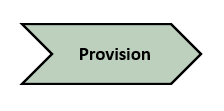How to deliever convincing presentations


Imagine if the people in your company could deliver inspiring presentations that convince clients to buy. Would that drive the growth of your business?
It is often said that one of the greatest fears among adults is public speaking, which is why many avoid those situations.
In sales, however, that’s not an option, because giving presentations is unavoidable for a salesperson or a sales manager. It might not be on a stage in front of a large audience, but it's often in front of a group in a meeting room, or even just one person.
To succeed in other areas, it is also essential to be able to convince others to buy into the ideas being presented.
In short, whether or not we work in sales, it is essential to master the skill of delivering convincing presentations to
successfully gain support for our ideas.
Furthermore, there is something presenters often overlook. It is not just the content of the presentation that is being judged, it is also the personal brand of the presenter, who should view it as an excellent opportunity for self-promotion.
A story
Several years ago, before smartphones were common and most people did not have access to video cameras, I took part in a
training session on presentation techniques.
It was both terrifying and inspiring.
Terrifying, because it exposed how incompetent I was at giving presentations. The first part of the training was
to prepare a five-minute presentation and deliver it in front of a camera. The second part was watching the video. My performance was so bad that I wanted to hide. The third part covered the appropriate practices for giving
presentations, and the fourth and fifth parts were repeats of the first two. There was some improvement, I no longer wanted to hide, but it was still poor.
Inspiring, because it made me realize that persuading people to buy into what I was saying would be very difficult unless
I significantly improved my presentation skills. And that is something I have worked on incrementally over time – and continue to do.
The 5 Ps of convincing presentations
Delivering convincing presentations is not an insurmountable challenge. It just takes method.

Let's go through each stage of the process illustrated above (the 5 Ps), considering the context of a buying and selling process for a solution to solve a business problem, being applicable to other contexts with the appropriate adjustments.

In the first phase (Planning), three key aspects must be addressed:
- Participants: understanding each participant’s position in the organization and the role in the buying decision process. Knowing their position helps to define the level of detail and the balance between simplicity and technical depth in the presentation. Understanding their role (see The reasons why people buy) helps tailor the presentation content based on the three types of roles:
- Final buyer: these individuals make the ultimate purchasing decision and are focused on the return on investment and the overall impact on the organization – in other words, the output.
- User buyers: these individuals assess how the purchase will affect their daily work. They are focused on how the solution impacts their responsibilities – in other words, the performance.
- Technical buyers: these individuals assess quantitative aspects and compliance with requirements. Their focus is on filtering viable solutions at the outset – in other words, the input.
- Time: understanding how long the presentation should be, whether it can or should include questions and answers, and how much time is available for preparation.
- Logistics: organizing the presentation as if it were an event, addressing all relevant details, such as invitations, transportation, venue, security, seating, equipment, materials, attire, on-site support, and catering.

In the second phase (Preparation), threekey aspects must be addressed:
- Purpose: always start with the end in mind, that is, the purpose. This means answering four questions:
- What do I want the participants to feel at the end of the presentation?
- What do I want the participants to do after the presentation?
- What do I want the participants to know during the presentation?
- What do I want the participants to say during the presentation?
- Structure: in most cases, the sequence of the presentation should be:
- Value: addressing corporate buying motivations (depending on the three buyer roles) and individual buying motivations (functional, emotional, and economic) of the presentation participants (see The reasons why people buy).
- Solution: describing the solution you are proposing to the business problem.
- Problem: explaining your understanding of the business problem, itscauses and consequences.
- Synthetis: highlighting the core issues related to value, solution, and problem.
- Call to action: inviting the audience to take action.
- Content: this is the information to be included in the five sections of the structure. In addition to technical points, it should incorporate stories (because our brains are wired to better retain stories) and humor (because it triggers serotonin production, creating a sense of well-being). If an audiovisual aid is used for the presentation, the following guidelines apply:
- Present three ideas at a time in a cascading format (this is not always possible, but it is helpful because it is easier for people to remember).
- Present minimal content at a time, remembering that the slides are only a support tool,the attention should stay on the presenter.
- Use multimedia to avoid monotony (which can make people sleepy).
- Use a sans serif font, size 14 or larger, to ensure readability.

In the third phase (Practice), three key aspects must be addressed:
- Rehearsal: rehearsing is essential due to the importance of non-verbal communication. According to Albert Mehrabian, the visual, oral, and verbal components of communication respectively account for 55%, 38%, and 7% of how trust is inspired in an audience.
- Recording: almost everyone today has a good video camera on their smartphone. Recording your rehearsal is easy and extremely effective for identifying what you are doing well or poorly, so you can improve.
- Feedback: besides self-feedback from watching the rehearsal video, it is also important to ask others for feedback to fine-tune the presentation.

Na quarta fase (Performance) é preciso tratar de 2 questões:
- Warm-up: just as no professional athlete competes without warming up, no presenter should go on stage without warming up and preparing their voice (which is their main communication instrument), rehearsing the opening, and taking deep breaths right before starting.
- Execution: the presenter should focus on three essential elements for success:
- Confidence: avoid using paper notes or other prompts, but use humor, tell stories, and connect with the audience by (i) making eye contact, (ii) moving naturally on stage, and (iii) not showing nervousness. Rehearsal is essential to achieve this
- Clarity: project your voice well, speak fluently (avoid filler words like "uhhh", "okay", "you know", "so", “like”, ...), and maintain a clear flow of ideas.
- Organization: introduce yourself at the start, stick to the allotted time and, if there are multiple presenters, transition smoothly between speakers by using a single computer if you have audiovisual support.

In the final phase (Provision), two key aspects must be addressed:
- Sharing: share the presentation content (partial or full) with participants afterward.
- Follow-up: reconnect with participants later to continue developing professional relationships.
Conclusion
Delivering convincing presentations requires method and practice. The more presentations we give, the more we refine our technique and become increasingly effective at persuading others and promoting our personal brand.
The right way to approach a presentation is as an opportunity to build long-term relationships of trust with your audience,
not as a threat to your physical or mental well-being. However, it is true that your reputation is on the line, so thorough preparation is essential.
The 5 Ps of convincing presentations outline the process, but mastering the techniques for each phase is still required, and that will be the subject of a future article.
Now that you know what it takes to deliver convincing presentations, work on developing your skills and those of your team,
because this will certainly help grow your business.
Filipe Simões de Almeida
Managing Partner, Fi Consulting
Publicado em 16-06-2025
